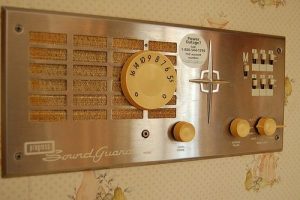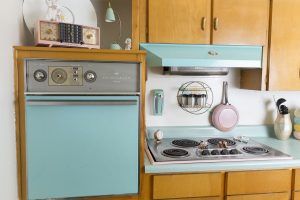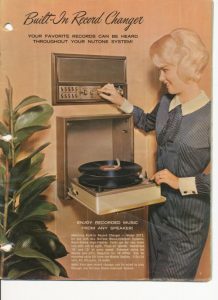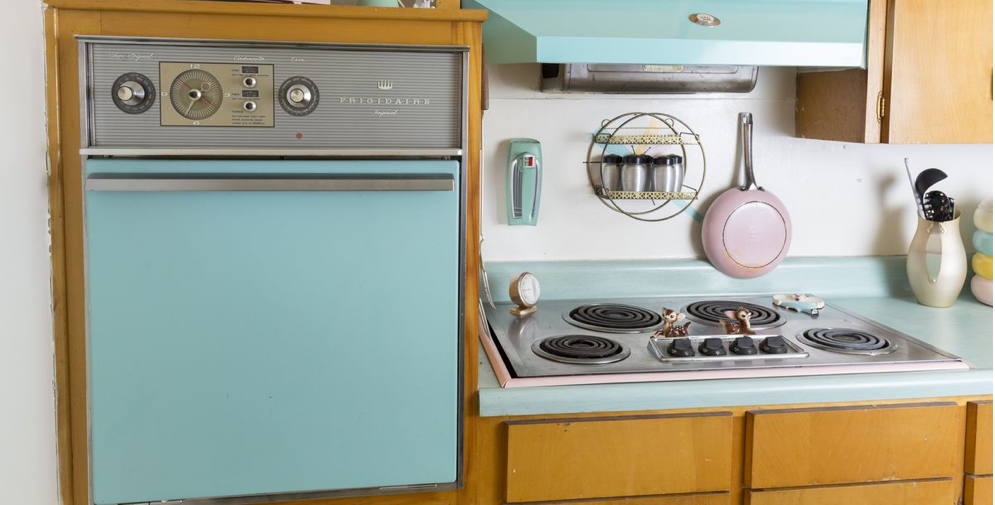
1966 NuTone Music-Intercom System MidCentury Modern Freak Tumblr
Vintage Intercom and Radio Combo
Pinterest
What’s more modern than an intercom built into and throughout a house? Imagine being able to contact anyone in your home from anywhere in your home. Go for the bonus and get a stereo system installed behind secret panels. The best ones have turntables!
Oh wait. That was forty years ago.
Modern house designs can be timeless. They’re clean, minimalist, unlikely to have filigrees and gingerbread features that fade from fashion. Classic designs last, just like a nice tuxedo or a simple black dress. In houses, walls of windows and great open areas are always inviting.
The architecture may be timeless, but the things that go into a modern house can be prone to technology marching past them. While a turquoise bathtub may eventually come back into style (it could happen), some old tech trends have become curiosities.
That intercom and stereo built into the walls of a house were welcome. There was no need to deal with the monopolistic phone company. No need for a console stereo taking up floor space. They were luxuries, especially as houses grew large. Shouting was impolite and ineffective. Getting music to carry to other rooms could be done by adding bigger speakers, but that made the sounds louder, not better. Finally, a solution that helped manage a house. An intercom in the kitchen made it easy to call everyone in for dinner. Music didn’t have to follow you through the house because it filled the house.

Midcentury Modern Appliances
Curbed.com
Of course, now everyone’s smartphones do the same thing without having to dig into walls for wiring upgrades. If there’s a dull spot, add a signal repeater or a hot spot. Today’s technology reaches outside the house’s walls making it easier to get the message out to everyone at school, in the office, or outside gardening. Walls are no longer limits or borders for information.
Modern is a relative term. Yesterday’s modern is not today’s modern. Fortunately, architecture ages well. Technology, however, is continually changing. Things like appliances are easy to upgrade. They wear out, which provides opportunities to install new versions of modernity. Even undercounter appliances are modular enough to be readily replaced.
Despite that, every era produces gadgets that struggle to survive.
Wander through older houses and see systems that can’t be readily removed. Major remodels typically work around the bulk of fireplaces and cast iron radiators. More efficient systems exist, but it is easy to decide to leave large blocks of masonry or steel in place rather than spend thousands extracting them.

1966 NuTone Music-Intercom System
Midcentury Modern Freak Tumblr
Keep wandering through older houses and find ideas that can’t be removed and are best left as built because they continue to be useful. Sunrooms (and ironically, mudrooms), atriums, laundry chutes, dumbwaiters are basic architectural elements that keep working as long as the Sun is shining, rain makes puddles, people enjoy houseplants, clothes get dirty, and packages are too heavy to carry.
What do you do if you buy a house with some anachronistic tech? Removing it may be harder than it looks. The panels may come out easily enough, but there’s a lot of wiring running through those walls. Covering them up can work, but you might have to explain a bump in the wall. Instead, celebrate it. Play with it – assuming it still works. Fittingly, intercoms become conversation pieces. Old stereos can find themselves reliving supposedly forgotten eras. Turntables are back as audiophiles revive the vinyl industry.
Remembering old tech is also handy for considering today’s modern appliances. Which ones will benefit most from upgrades and replacements? Which ones will be timeless?
Predicting the future is a guessing game. Who would’ve thought a show like Mad Men would revitalize 1960’s chic? Which trends from 2018 will stubbornly persist, thrive, or be redefined by time?
